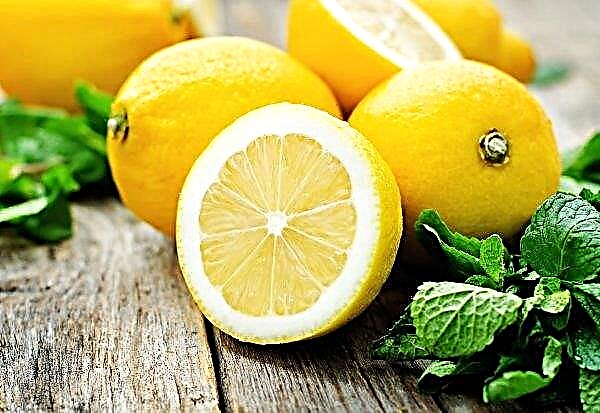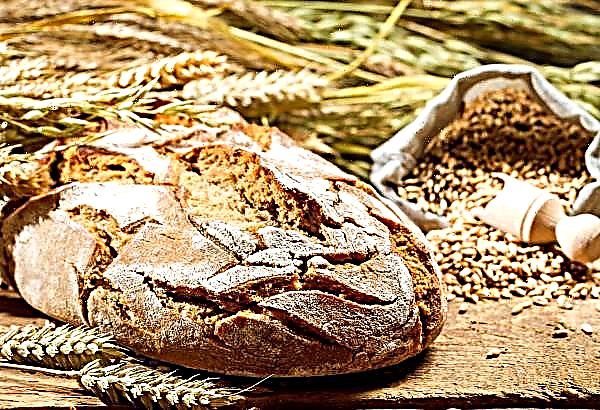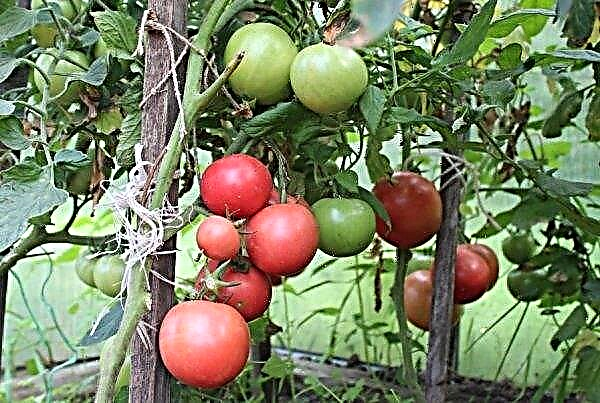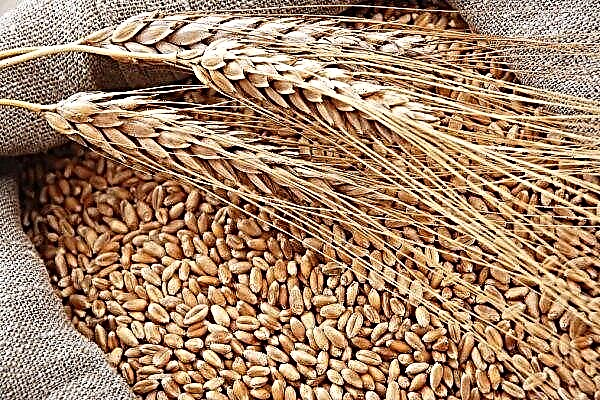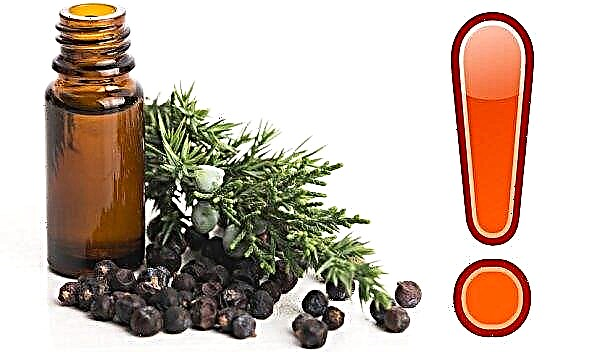Modern poultry farmers rely on fast-growing and highly productive crosses of chickens, however, such birds are often exclusively “greenhouse” species. Due to the peculiarities of their origin, they are not able to withstand all kinds of infections, therefore, they require great attention and the amount of antibiotics when breeding. For this reason, many farmers are looking for a safer and more profitable alternative that raspberries often become. This article describes in detail all the features of this breed, and also lists its main advantages and disadvantages.
A bit of history
Raspberry (or Mechelen cuckoo) - refers to one of the most popular breeds of chickens in the world. It arose long ago, the first successful hybrids appeared in the 19th century, in the vicinity of the Belgian town of Mechelen (hence the name of the breed).
Local amateur breeders created Mechelen chickens on the basis of the best breeds of the time, thanks to which the resulting hybrid exceeded the parent by several times.
Did you know? Mechelinskaya cuckoo actively bred in Russia — Before the revolution of 1917, it was one of the most common breeds in the state. It is noteworthy that the local population called it the exotic name “cucum de raspberry”, from which its modern version originated.
Today it is not completely known which chicken species took part in the formation of raspberry chicken, but it is reliably known that the genes of the Flanders, Shanghai, Chinese, Flemish, hawk and Mechel hens, as well as Bramsk hens, were detected in the blood of this bird.
This breed is still considered a national treasure of Belgium, and dishes from Malin hens are considered a special Belgian delicacy. Despite more than a century of history, these chickens are quite popular today, as they differ not only in productivity, but also in the refined taste of meat.
General characteristics
This breed has typical features that the rest of the meat breeds of chickens. Her body is quite dense and fleshy, but this does not affect her grace.
Since Mechelen cuckoos were created for breeding under free-range conditions, their large body does not affect life activity in any way, due to which the characteristic taste of raspberry chicken meat is saturated.
Appearance and standard
The breed of the Mechelen cuckoo has the following characteristics:
| Part of the body | Description |
| Head | Medium size. |
| Crest | Leaf-shaped, small, simple structure, with 4-6 teeth of a saturated red shade. Its posterior edge is always located strictly horizontally to the body. |
| Beak | Strong, bent down, medium length. |
| Neck | Medium length, dense and powerful. |
| Chest | Wide, round and dense, bulges outward. |
| Stomach | Rounded, fleshy, but not pronounced. |
| Wings | Small, often shortened, tightly pressed to the body. Always parallel to the body. |
| Tail | Short, set at an angle of 40-45 ° to the body. |
| Paws | Powerful, dense and fleshy. Their inner side is covered with dense plumage. |
| Plumage and color | It is well developed, under a dense main feather there is a fairly dense layer of fluff. The color of the plumage acquires a striped or speckled ornament. Most often, white and black colors are combined. Sometimes there may be hybrids with white, blue, silver color or Colombian color. |
Important! Compulsory breeding is subject to specimens with long legs, a flat chest and an excessively light body color, without a distinctive ornament.
Temperament
This chicken is attractive not only in productivity and bright appearance, but also in character. Representatives of the breed are distinguished by affectionate, pacified and calm behavior. They are not characterized by fuss and excessive noise, so keeping in the household even a few dozen individuals will not cause additional trouble. The rooster in the chicken coop maintains a strict hierarchy and order, so the females are always full and calm for safety. When attacked by rodents or small predators, he can decisively stand behind the herd, but his aggression towards a person does not manifest in any way.
The rooster in the chicken coop maintains a strict hierarchy and order, so the females are always full and calm for safety. When attacked by rodents or small predators, he can decisively stand behind the herd, but his aggression towards a person does not manifest in any way.
Did you know? The Mechelen cuckoo got its unique “shaggy legs” due to the crossing of the first hybrids with hawks. After crossing, the trait became so stable that subsequent mating with other breeds did not affect its presence in the genotype.
Advantages and disadvantages
- The main positive qualities of raspberry hens:
- large and fleshy body;
- excellent taste and nutritional characteristics of meat;
- fast weight gain;
- high resistance to various infections and sudden changes in weather conditions;
- unpretentiousness to the conditions of detention;
- unique and aesthetic appearance.
- The negative sides of the breed include:
- high gluttony;
- whimsicality to the diet and the quality of feed;
- undeveloped instinct of incubation;
- low egg productivity.

Content Rules
In order to ensure that Mechelen cuckoos not only have an intensive rate of weight gain, but also egg production, the bird should definitely create the most favorable conditions. Despite the fact that the breed looks quite exotic, for its maintenance will not require additional resources.
Therefore, you can get high-quality meat and egg products of these chickens in absolutely any farm that contains a minimum amount of equipment and all kinds of buildings for care.
Poultry equipment
The breed can grow and develop in the simplest chicken coop. The recommended height of such a structure is in the range of 1.2-1.5 m, however, hens can safely live in large rooms. The optimal size of the chicken coop is calculated based on the number of livestock, each individual should have at least 0.2 square meters. free space.
Such structures are often made of wood, brick or concrete materials, while it is recommended that the floors be made exclusively of their moisture-resistant natural wood. This will help protect the paws of chickens from hypothermia in the winter. The floor covering must be covered with straw, hay or sawdust with a layer of 10-15 cm.
This not only ensures optimal hygiene in the chicken coop, but also creates a special microclimate for the bird. In addition, perches and nests should be installed in the chicken coop.
Basic requirements for perches:
- they must provide one individual with at least 25 cm of free space;
- install them in cascades, with a distance of at least 40-50 cm from each other;
- the material for perches is a rounded and polished beam with a section of 4x5 cm;
- fix them in a part of the chicken house far from the entrance, far from the ventilation windows.
 The requirements put forward to the nests for breeding Mechelen cuckoo are:
The requirements put forward to the nests for breeding Mechelen cuckoo are:- the dimensions of the structure should be within 35x35x35 cm;
- nests are mounted in several tiers, at a distance of about 50 cm from each other (from the floor to the first tier, a space of at least 60 cm should be maintained);
- the bottom of the nests is covered with a straw layer of 10-15 cm;
- the base for the nest must be of high quality, untreated wood with chemicals;
- the number of such structures is calculated strictly; one nest should serve no more than 3-4 hens.
The building must provide chickens with a special microclimate: in winter this temperature is not lower than +10 ... + 15 ° С, in summer - about +20 ... + 25 ° С. In winter, the bird can successfully tolerate a short-term decrease in temperature in the chicken coop to +5 ° С.
In addition, the bird does not like high humidity, so in the chicken coop you must definitely create several ventilation holes that provide humidity within 60%. In winter, the building must not only be heated, but also highlighted.
In this case, the daylight hours of chickens should be about 10-12 hours, otherwise their egg productivity decreases sharply.
Care
Proper care will help to ensure the optimal sanitary and hygienic condition of poultry holding areas. They clean in the chicken coop as they become dirty, however, the litter must be updated to a new one at least once a week.
The chicken coop and its contents at least 1 time per month requires general cleaning. To do this, the walls, floor, perches, nests, etc. are cleaned of droppings with the help of soap solutions. To prevent the development of fungi and any infections after the general cleaning, the chicken coop must be disinfected. To do this, the entire room and internal equipment are carefully treated with sterilizing liquids (2% formalin solution or analogues).
To prevent the development of fungi and any infections after the general cleaning, the chicken coop must be disinfected. To do this, the entire room and internal equipment are carefully treated with sterilizing liquids (2% formalin solution or analogues).
In its absence, the chicken coop can be burned with an open flame using a blowtorch.
To prevent the development of fleas and other pests in the plumage of chickens, so-called zonal baths are equipped in their places of detention. They are special containers, covered with a fine granular mixture.
During the "bathing", the mixture pushes from the plumage of all kinds of parasites out. Thus, chickens manage to get rid of them naturally, without any harmful chemicals.
They make bathtubs from wooden, plastic or metal containers measuring 100x70x20 cm (LxWxH). A mixture of crushed ash and river sand (1: 1) is often used as a filler. To improve the cleansing ability of the mixture, it is sometimes added 10-15% of the total mass of peat or clay peeled.
Walking yard
Mechelen cuckoos especially do not need a walking yard, which makes it possible to breed them in isolation, in separate cells. However, this content negatively affects the quality of the meat, as well as its aromatic properties, therefore, in a private farm, you can not do without a separate courtyard near the chicken coop.
Equip it on a hill in the chicken coop or nearby area, with a calculation of 1 sq. M. areas of 3-4 individuals. The area under the walking yard must be in the shade, near the tree-like vegetation, since in the summer the open sun can cause heat shock to the chickens. If there are no such conditions on the site, the walking yard is covered with a canopy of opaque polyethylene or any roofing materials, to choose from.
The area under the walking yard must be in the shade, near the tree-like vegetation, since in the summer the open sun can cause heat shock to the chickens. If there are no such conditions on the site, the walking yard is covered with a canopy of opaque polyethylene or any roofing materials, to choose from.
A fence made of plastic or metal mesh with a height of 1-1.2 m is installed around the perimeter of the walking yard. A higher structure is impractical, since this breed is deprived of the ability to fly.
Feeding troughs and drinking bowls
Feeding troughs and drinking bowls are an obligatory accessory not only of a chicken coop, but also of a walking yard. They are equipped in a separate place, protected from direct sunlight. Today, there are many factory models, but to save money they are often made independently.
For this, wood, aggressive metals or food-grade polymers are suitable.
The feeder is often a small rectangular box with a height and width of at least 10x10 cm. The length of the feeder is selected relative to the number of livestock so that at least 10-15 cm per individual. The feeder must be fixed to a strong support so that the chickens cannot get into it. and flip.
Any open container can serve as a drinking bowl, but often with farmers it is a vessel with a volume of about 5-6 liters.
Drinking bowls and feeders must be cleaned daily, otherwise they can become a source of infection of chickens with infections. The feeder is cleaned daily, or after each change of feed. Once a week they should be cleaned with soap and water and thoroughly disinfected during general cleaning. Water in the drinking bowl is changed daily 1-2 times a day, cleaning and disinfection of the tank is carried out together with the feeder.
Water in the drinking bowl is changed daily 1-2 times a day, cleaning and disinfection of the tank is carried out together with the feeder.
Important! The food in the feeders should not stagnate, so it is sprinkled in small portions, otherwise spoiled feeds can become a source of serious digestive upsets and intoxication of the bird, including death.
Moult and egg laying break
Seasonal molting occurs in hens in the middle or late fall. At this time, chickens sharply decreases or egg production completely stops. The duration of this period depends on the overall health of the chickens, but on average it does not exceed 6-7 weeks.
The change of plumage is accompanied by a huge loss of vitamins and minerals, therefore, during this period, the bird should definitely include all kinds of vitamin and mineral supplements in the diet.
Adult chicken diet
Before drawing up a ration for these chickens, it is imperative to remember that this bird belongs to highly productive meat breeds. This means that during the first year of life, such hens rapidly increase meat, and this seriously affects the activity of metabolic processes in her body.
In the end result, with an unbalanced diet, the quality of meat products decreases sharply, and fat deposits accumulate in dietary meat. Feed the bird 2-3 times a day according to a well-established schedule. An adult bird needs about 250-300 g of food per day. Half of this volume should be dry, highly nutritious feed, the second part is carefully chopped vegetables and fresh herbs.
Feed the bird 2-3 times a day according to a well-established schedule. An adult bird needs about 250-300 g of food per day. Half of this volume should be dry, highly nutritious feed, the second part is carefully chopped vegetables and fresh herbs.
The most profitable and appropriate diet will be based on special compound feeds for meat chickens or on high-quality grain.
In addition to the main feed, chickens should also receive animal products, they provide an opportunity to improve the quality of meat products, as well as increase the digestibility of the main feed. To do this, they are given the remains of fish, fish or meat meal, chopped offal.
It is also advisable to give the bird chalk, eggshells and other sources of calcium.
Important! Hormonal preparations for raspberry hens are contraindicated, they cause obesity, which reduces the quality of meat products at times.
Breeding young
Prepare for breeding chickens should be in advance. Despite the fact that they begin to trot at 5-6 months, chickens at the age of 1-2 years are most suitable for breeding. With males, the situation is different; young males 6-12 months old are chosen for breeding, otherwise the percentage of fertilized eggs is reduced significantly.
In order to prevent competition in the chicken coop, there must be at least 8 chickens per cock. Small individuals are selected for breeding, since they are the ones with the highest productivity.
Egg incubation
Despite the fact that hens willingly rush to hatch fertilized eggs, after a while they throw a clutch, so the eggs need to be placed in an incubator. But, not all eggs are suitable for this, so each farmer must carefully select them.
Suitable for laying are eggs of medium size, with a perfectly flat surface, without any inclusions. Excessively soiled eggs are also subject to rejection, as dirt will interfere with the access of oxygen to the embryo from the outside.
Before laying eggs and the incubator must be prepared. The incubator and the accompanying room are thoroughly cleaned and disinfected with chloride of lime, after which a preliminary launch of the entire installation is carried out.
After about 8-10 hours, the eggs are brought into the room with an incubator and kept at a temperature of +25 ° C, this will accelerate the development of the embryo and also prevent sharp temperature changes.
The start of the bookmark often occurs in the evening, at about 18 hours, before this time the incubator must be warmed up and put into operation.Immediately before laying eggs are disinfected, this makes it possible to increase the yield of young animals up to 90-95%, as well as to avoid infection of newborns with pathogenic microorganisms.
For these purposes, use a 1-1.5% solution of hydrogen peroxide or potassium permanganate, which is carefully wiped with each egg.
The egg incubation schedule is as follows:
| Duration of days (after bookmark) | Temperature ° C | Humidity% |
| 5—6 | +38 | 60—70 |
| 7—11 | +37,5 | 35—45 |
| 11—20 | +37,3 | 70—80 |
By about the 20th day after laying the eggs in the incubator, hatching takes place. If the process was carried out correctly, the first chicks appear in the morning or closer to dinner. Newborns are taken at the same time, until this time the incubator can not be opened.
Chick Care and Feeding
The first few days, chickens need special care. They are placed in a separate tank of 20-25 individuals per 1 sq. M. and illuminated around the clock using a desk lamp. After that, they are transplanted into a separate fence and kept for several weeks at a temperature of +25 ... + 28 ° C, after which they can gradually be transferred to natural conditions.
After that, they are transplanted into a separate fence and kept for several weeks at a temperature of +25 ... + 28 ° C, after which they can gradually be transferred to natural conditions.
They feed the chickens for the first 7-10 days every 2 hours, and all kinds of mixes from crushed cereal grains, corn with the addition of boiled eggs and chopped grass are best suited for this.
By about 2 weeks of age, boiled potatoes, fresh vegetables and low-fat cottage cheese are added to the chicken diet. By this time they are fed about 4 times a day. From about 3-4 weeks, chickens are transferred to an adult diet (3 times a day) and adult feed is gradually introduced into their diet.
Vaccination of young animals
Vaccination is a prerequisite for the maintenance of chickens. One makes it possible to increase their viability of chickens, as well as to avoid serious losses. Therefore, they resort to the procedure almost from the first days of the life of chickens.
The following chick vaccination schedule is used:
| Age | What disease |
| 1st day | Marek's disease |
| 5-7 days | Paracox |
| 3-18 days | Infectious bronchitis, Newcastle disease |
| 24-27 days | Gumboro's Disease |
| 28 days | Newcastle disease |
| 8 weeks | Newcastle disease |
| 10 weeks | Infectious bronchitis |
| 14 weeks | Newcastle disease, infectious bronchitis |
| 16-18 weeks | Smallpox, anemia, Encephalomyelitis, infectious bronchitis, Gumboro and Newcastle disease |
 Mechelen cuckoo is one of the most profitable and productive meat breeds of chickens. Despite the fact that it was bred more than 100 years ago, today it exceeds many modern hybrids not only in meat quality, but also in its unpretentiousness in content.
Mechelen cuckoo is one of the most profitable and productive meat breeds of chickens. Despite the fact that it was bred more than 100 years ago, today it exceeds many modern hybrids not only in meat quality, but also in its unpretentiousness in content.In addition, unlike modern crosses, these chickens are capable of independent reproduction, so when breeding a breed this eliminates the cost of young growth.


